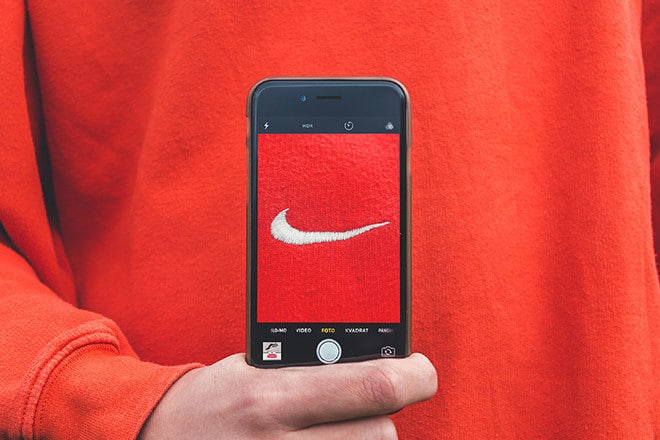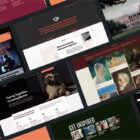
What comes first: branding or strategy? It’s an age-old question for designers and marketers and today extends to digital marketing as well. Should your brand design be based on digital marketing needs?
In today’s marketplace, the answer is overwhelmingly yes. You’ll be hard-pressed to find a brand that isn’t leveraging some type of digital marketing, including social media, to communicate with audiences.
Here’s why.
2 Million+ Digital Assets, With Unlimited Downloads
Get unlimited downloads of 2 million+ design resources, themes, templates, photos, graphics and more. Envato Elements starts at $16 per month, and is the best creative subscription we’ve ever seen.
Almost Everyone Uses Digital Marketing

Most icons fit in round or square frames, making that shape ideal for a logo.
The Digital Marketing Institute reports that “consumers expect brands to have a digital presence, and nearly 30% prefer to communicate with brands via digital channels.”
So why wouldn’t you design a brand presence – if you have the opportunity – that is made for those platforms?
When you start to think about digital marketing and brand, there are multiple considerations:
- Website
- Social media platforms
- Online ads
- Push or other notifications
- Video
And while every one of these formats might use a slightly different version of your logo or brand mark, there are a few commonalities. Most icons fit in round or square frames, making that shape ideal for a logo.
Header images on everything from websites to social media profiles are more likely to use a widescreen aspect ratio (16:9).
Ad and preview formats are important to think about as well. You might need an animated version of your new logo if you plan on using a video format.
Here’s something else you might not have thought about yet: Word and character counts for your brand name or slogan. If one of your primary marketing channels is digital advertising (particularly Google Ads), exceptionally long brand names might not fit in headlines or other ad text locations. (This gets even more tricky if you need to put the name of a sponsor ahead of the brand name.)
Key tip: Designing a brand with digital marketing in mind is rooted in creating a shape, size, and color that works in the places and formats where you have a brand presence.
Think About Public Brand Building

Need more support for designing your brand around digital marketing? Think about how most people will interact with your brand or logo. It’s likely through social media or your website.
This public version of your brand should use the primary mark to establish the strongest visual tie. Many brands have secondary logos for social media icons that are a snapshot of the overall logo.
But if the first place a person comes in contact with a brand is online, shouldn’t that feature the primary visual identity? It’s important to create a visual tie with visitors, subscribers, or customers, using the same logo or brand mark everywhere possible can go a long way toward this.
Key tip: Think about the most visible places for your brand. The brand name, slogan, and primary logo should be optimized for that use.
Create Agile Design Elements

You have to do more than want to create a brand that serves a great digital marketing purpose; you also have to design it.
Developing a brand design and guidelines with modular parts that can be used and reused in a variety of ways can save you time and work and make your marketing team happy.
As you create design elements for a digital-first brand, consider the following:
- Shape. Mix and match parts that and be added and subtracted to each other to fit in key marketing size configurations.
- Color. Make it consistent and unique. Ensure that you also have single-color and reverse options. Start with RGB to get the perfect hue and then play with the CMYK option.
- Focus on readability. Words with a lot of letters or long phrases can lose their luster quickly at small sizes. Do you have an alternative? Is there a better way to work with these text elements?
- Consider a “responsive logo” that shifts in size or shape with the size of the website.
- Include plenty of contrast for light and dark mode variations. Users have control of this feature on many devices and apps. Don’t ignore it.
- Use featured images and logo sizes (and upload them to your website) in formats and sizes that are made for sharing. This can significantly streamline workflows for small teams because image previews will automatically work on social media. This can be a real time-saver.
Key tip: Design elements that you can piece together or take apart as the design dictates. This is the root of a responsive logo design and creates more agility with brand visuals.
How Do You Do It?

Getting everyone on the same page at the start of a branding process is just good business. It takes everyone involved in the brand strategy to create a solid plan for how to push the visual identity forward.
If digital is part of your overall plan, then it should be a part of your plan for brand development and design.
If digital is part of your overall plan, then it should be a part of your plan for brand development and design. It’s a conversation you should have before the branding process starts.
To most efficiently plan a brand around digital marketing, gather a list of all the places and channels where your brand will appear digitally. Rank the order of importance of these elements.
Note sizes and specifications for each use. (It’s probably best to work in aspect ratios rather than exact specifications as you design vector-based formats.)
Sketch out logo versions in appropriate shapes and sizes to push the branding project forward.
Working in this manner can help prevent getting back an overwhelmingly vertical or horizontal logo that doesn’t render well as a social media icon or fit within the constraints of your website framework. (You’d be surprised at how often this happens.)
Then have conversations to sell it! Explain the value and benefit of designing with digital marketing in mind. (The tips scattered throughout this article can be a great starting point.)
A Few Exceptions
With all that in mind, there are some instances where digital marketing shouldn’t push brand design and development. The most common of those exceptions is for long-standing brands that don’t want to overhaul in a manner that diminishes brand loyalty or recognition.
Other exceptions include:
- Brands without a digital presence
- Brand with strong or established secondary iconography
Even if digital marketing isn’t at the top of your brand’s strategic plan, it will probably continue to grow as a tool in your kit. For most marketers and designers in today’s world, building a brand around digital use can be a smart and timesaving endeavor.
Conclusion
At the end of the day, digital marketing will push brand design whether you intend for it to happen or not. (Brand materials will appear online; you can control how it looks.)
Your brand will be more consistent if you make this part of your design strategy from the beginning. Have those conversations early so that you can create the best brand design for your company or organization.





